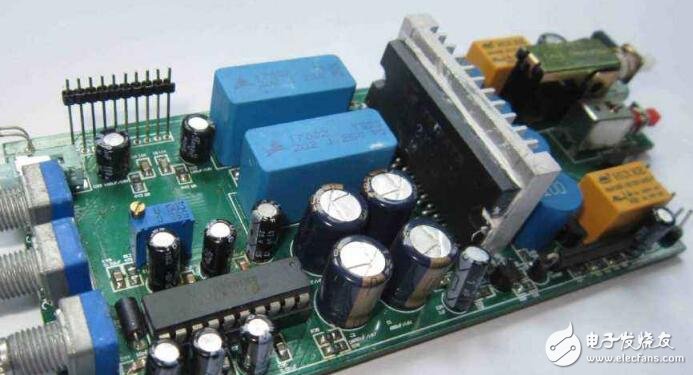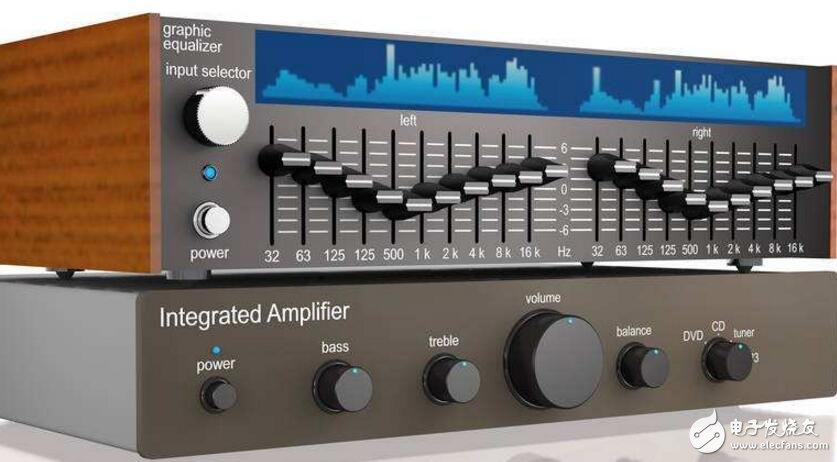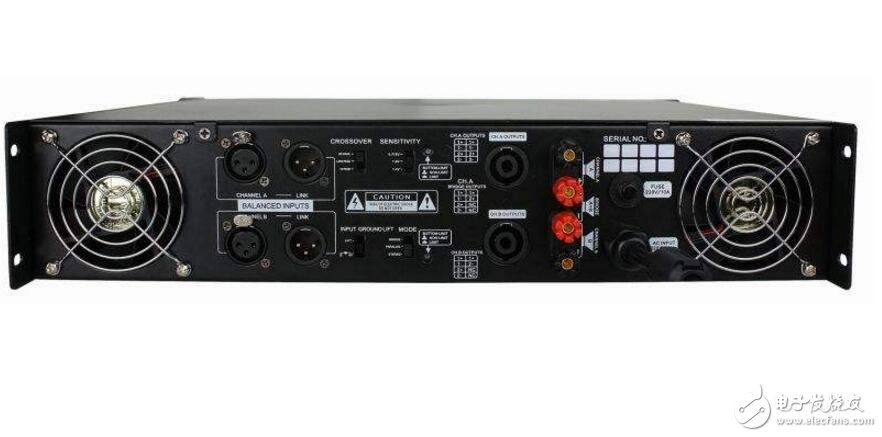Audio power amplifier, referred to as power amplifier. Its function is to amplify the weak audio signal output from the sound source (such as DVD player, CD player, TAPE machine, etc.) and generate enough power to push the speaker to sound. According to the current demand for audio consumption, civilian amplifiers have been basically shaped into two categories, namely pure music amplifiers and home theater AV amplifiers.
Audio power amplifier principleAn audio amplifier is actually amplifying a smaller audio signal, increasing its power, and then outputting it. The preamplifier is mainly to complete the amplification of the small signal, and a parallel amplification circuit is used to amplify the voltage of the input audio small signal to obtain the input required by the latter stage. The latter episode mainly powers up the audio so that it can drive the resistors to get the desired audio.

The full name of the audio amplifier is the audio power amplifier, which is used to push the sound of the speaker to reproduce the sound. It is used in all sound electronic products. An audio amplifier is actually amplifying a smaller audio signal, increasing its power, and then outputting it. The preamplifier is mainly to complete the amplification of the small signal, and a parallel amplification circuit is used to amplify the voltage of the input audio small signal to obtain the input required by the latter stage. The latter episode mainly powers up the audio so that it can drive the resistors to get the desired audio.
The dual channel is the popular stereo, two speakers or a subwoofer. (Single channel amplifiers have only one output channel and only one speaker, which has been eliminated).
Important parameters of audio power amplifierThe main performance indicators of audio amplifiers are output power, frequency response, distortion, signal to noise ratio, output impedance, damping coefficient and so on.
Output Power
Output power: The unit is W. Since the measurement methods of different manufacturers are different, some names are different. For example, rated output power, maximum output power, music output power, peak music output power.
Music power
Music power: refers to the instantaneous maximum output power of the audio amplifier to the music signal under the condition that the output distortion does not exceed the specified value.
Peak power
Peak power: refers to the maximum music power that the audio amplifier can output when the audio amplifier volume is adjusted to the maximum without distortion.
Rated output power
Rated output power: The average output power when the harmonic distortion is 10 [%]. Also called the maximum useful power. Generally speaking, the peak power is large, the audio power is at the music power, the music power is greater than the rated power, and generally the peak power is 5-8 times the rated power.
Frequency response
Frequency response: Indicates the frequency range of the audio amplifier and the unevenness in the frequency range. The straightness of the frequency response curve is generally expressed in decibels [db]. The frequency response of the home HI-FI audio power amplifier is generally 20Hz--20KHZ plus or minus 1db. The wider the range, the better. The frequency response of some of the best audio amplifiers has been 0--100KHZ.
Distortion
Distortion: The ideal audio amplifier should be a faithful reproduction of the input signal without any change. However, for various reasons, the signal amplified by the audio power amplifier is compared with the input signal, and different degrees of distortion are often generated. This distortion is distortion. Expressed as a percentage, the smaller the value, the better. The total distortion of the HI-FI audio amplifier is at zero. Between 03[%]--0.05[%]. The distortion of the audio amplifier has harmonic distortion, intermodulation distortion, cross distortion, clipping distortion, transient distortion, transient intermodulation distortion and the like.
Signal to noise ratio
Signal-to-noise ratio: refers to the ratio of the signal level to the various noise levels output by the audio power amplifier. It is expressed in db. The larger the value, the better. The SNR of the general household HI-FI audio amplifier is above 60db.
Output impedance
Output Impedance: The equivalent internal resistance presented to the speaker, referred to as the output impedance. The main parameters of the audio power amplifier are currently available in China: distortion: 1%, efficiency: 90%, power: maximum 20kw, frequency: 100hz-50khz. These indicators are not met at the same time, and different frequency indicators are different.

The back of the preamplifier or the combined amplifier is arranged with a number of signal input terminals, which are arranged in pairs in left (L or white) and right (R or red). When using, simply connect the corresponding source device to the corresponding signal input terminal, such as TUNER, CD (recording machine), TAPE (recording stand), AUX (standby), PHONO (recorder). In essence, except for the PHONO file, the input terminals of other TUNER, CD, AUX, TAPE, etc. have almost the same performance, and they are interchangeable and common, and the effect is exactly the same. However, in order to facilitate the selection of the sound source, we generally take the connection corresponding to the sound source.
Common audio power amplifiers:(a) Transformer-coupled class A amplifier circuits are mainly used in tube amplifiers;
(b) Transformer-coupled push-pull power amplifier circuit is mainly used in some tube amplifiers with large output power;
(c) The OTL power amplifier circuit is mainly used in some amplifiers with lower output power;
(d) OCL power amplifier is a commonly used amplifier circuit, which is often used in some power amplifiers with large output power requirements;
(e) BTL power amplifier circuits are mainly used in applications where higher output power is required. OTL, OCL, and BTL power amplifier circuits are primarily used in transistor amplifiers.

AUdio INPUT is the audio signal input port, and all three are. The next three are 5.1-channel audio input ports. Usually you can listen to and sing and connect to one of the three groups of AUdio INput. The 5.1-channel stereo effect is good. It is suitable for watching movies, but it is divided into several groups of signal inputs. The output is the 5 sets of terminal blocks on the right (SPEAKERS SYSTEM), from left to right are the right channel, the left channel (left and right main channel), center, surround right, surround left. Can be connected to 5 speakers, red for the positive, connected to the speaker positive, black for the negative, connected to the negative speaker.
The output signal cable of the computer sound card is connected to the AUdio INput of the power amplifier, and the output end of the power amplifier is connected to the speaker. The wireless microphone is connected to the wireless microphone receiver, and the output signal is connected to the power amplifier. If it is more convenient to have a pre-stage effect, you can input the sound card signal and the signal of the wireless microphone receiver into the pre-effects, and the effect output is connected to the amplifier. This is better, and the sound quality is adjusted by the effect. will be better.
Incremental encoders provide speed, direction and relative position feedback by generating a stream of binary pulses proportional to the rotation of a motor or driven shaft. Lander offers both optical and magnetic incremental encoders in 4 mounting options: shafted with coupling, hollow-shaft, hub-shaft or bearingless. Single channel incremental encoders can measure speed which dual channel or quadrature encoders (AB) can interpret direction based on the phase relationship between the 2 channels. Indexed quadrature encoders (ABZ) are also available for homing location are startup.
Incremental Encoder,6Mm Solid Shaft Encoder,Hollow Rotary Encoder,Elevator Door Encoder
Jilin Lander Intelligent Technology Co., Ltd , https://www.jllandertech.com